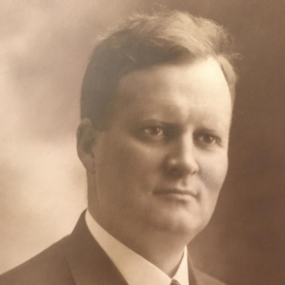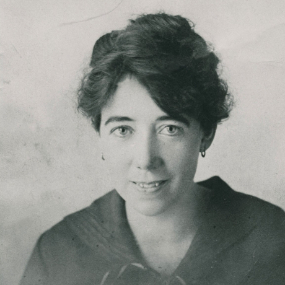After a two-and-a-half-year renovation, the distinctively beautiful Manti Utah Temple is now rededicated as a house of the Lord. Originally dedicated in 1888, it is one of the oldest pioneer-era temples in The Church of Jesus Christ of Latter-day Saints.
Downloadable HD B-roll
-
- Manti-Murals-Restoration
- Manti-Murals-Restoration
- Manti-Murals-Restoration
- Manti-Murals-Restoration
- Manti-Murals-Restoration
- Manti-Murals-Restoration-Creation-Room.jpeg
- Manti-Murals-Restoration
- Manti-Murals-Restoration
- Manti-Murals-Restoration
- Manti-Murals-Restoration
- Manit-Murals-Restoration
- Manti-Murals-Restoration
- Manti-Murals-Restoration
- Manti-Murals-Restoration-Teichert-Descendants
- Manti-Murals-Restoration-Teichert-Descendants
- Manti-Murals-Restoration-CCA-Christensen
- Manti-Murals-Restoration-Joseph-Everett
- Manti-Murals-Restoration-Minerva-Teichert
| Temple Square is always beautiful in the springtime. Gardeners work to prepare the ground for General Conference. © 2012 Intellectual Reserve, Inc. All rights reserved. | 1 / 2 |
An integral part of the renovation focused on the restoration of priceless works of art that have become synonymous with this sacred structure.
“We needed to care for the murals,” said Emiline Twitchell, Church History Department conservator over the project for the Church of Jesus Christ. “To extend the lifespan of these murals means we preserve a symbolic entry point into new understandings of our temple worship, theology and relationship with the divine.”
The historical significance of these murals (including the oldest mural in an existing temple of the Church) is not lost on the conservators tasked with bringing back each mural’s brilliance after decades of repairs and overpainting.
- 8b61cbaa889911eea5a3eeeeac1ec6fbc785c0a1.jpeg
- 899c4deb889911eea309eeeeac1eec56a166f23e.jpeg
- 76a4a6fe889911ee9428eeeeac1ed3288b8458ae.jpeg
- 73315231889911ee99a8eeeeac1ed9fa207a4623.jpeg
- 83e1c832889911ee99a8eeeeac1ed9fa2f56de8a-(2).jpeg
- 819e40d4889911ee9337eeeeac1ea1a2ddabf3f4-(1).jpeg
- 8f0f1c36889911ee8b85eeeeac1e760fd634bc1a.jpeg
- 8d1ff666889911ee840deeeeac1e4fd4edb6b8a0.jpeg
| Temple Square is always beautiful in the springtime. Gardeners work to prepare the ground for General Conference. © 2012 Intellectual Reserve, Inc. All rights reserved. | 1 / 2 |
The Purpose
Each mural, completed by renowned artists of the time, represents a different historical setting. One illustrates the earth’s creation, conceived by C.C.A. Christensen. Another is symbolic of the Garden of Eden, painted by Joseph Everett and Robert Shepherd. The third depicts the fallen world, created by Minerva Teichert. Combined, they evoke sacred reminders of spiritual progression.
The artwork adorns three instruction rooms in the Manti Utah Temple, where Latter-day Saints make consecrated agreements with God and receive a deeper understanding of His plan of salvation and the Atonement of Jesus Christ. Worshippers also learn and gain a greater appreciation for His sacrifice that allows us to return to the presence of our heavenly parents as united families for eternity.
That deep spiritual significance is why the Church of Jesus Christ goes to meticulous lengths to preserve such important works of art. And it’s why an elite team of conservators was commissioned to restore them.
Finding the Truth
“It's a privilege to work here,” said Elizabeth Kendall, owner and co-director of PARMA Conservation (Preservation and Recovery of Masterpieces of Art). “We’ve uncovered something that's been covered for decades and decades.”
Working like forensic detectives, Kendall and her team apply experience, chemistry and a delicate touch to uncover years of overpainting and misapplication of harsh finishes. At the foundation of their painstaking work is a strict adherence to the ethic of “finding the truth.”
“The truth is what the artist intended us to see,” said Peter Schoenmann, co-director of PARMA Conservation. “Plain and simple, there are different obscuring layers that can muddy the truth, and a conservator’s job is to conserve only the original.”
The PARMA team spent several weeks at the temple getting to the truth. Among the challenges was removing the wrong type of clearcoat, applied decades ago, that had chemically bonded to the artist’s painting underneath.
“We had to do a lot of testing to see what kinds of solvents would remove the varnish layer, which was hardening and cracking and discoloring the painting. It really makes it hard to reverse,” said Twitchell.
The conservators estimated that the window to reverse the damage was nearly closed. “It was at the point that nobody would have been able to take it off at all,” said Kendall. “So, the murals would have been stuck as they are, and nobody would have been able to get to the original.”
Equipped with years of expertise, the conservators were able to find the right combination of solvents and removal methods to reveal the artist’s original color applied nearly 140 years ago. “You have to unlock the secret with chemistry. That’s what we do every day when we’re on a job site like this,” said Schoenmann.
The Artists’ Murals
 Download Photo
Download PhotoC.C.A. Christensen was commissioned by the Church in 1867 to paint the creation room mural. “He was 55 years old. He was [a local] from south Sanpete County. He taught at what is now Snow College. He taught Danish and art. So, he really had roots in this community,” said Twitchell.
Christensen painted the story of the Creation starting with the Genesis story in the Bible, a scene that moves sequentially around the room. “You get volcanic eruptions and the forming of the earth ... plants and flowers ... reptiles from the Mesozoic era [and] wild … and domesticated animals,” said Twitchell.
“The biggest challenge … was the creation room because it had all the layers of former restorations on it,” said Kendall. “We found at least four different types of over paint, as well as a coating that is very challenging to get off. He was an exceptional artist and people didn’t see that until we took off all the other renovations that had occurred over the decades.”
Unlike the creation room mural, which was painted on plaster, the mural in the garden room depicting the Garden of Eden was painted on canvas and had its own challenges.
“The garden room, as we have it now, was not the original mural. That mural was on plaster that deteriorated past the point of being able to be preserved,” said Twitchell. “In the 1940s, new sailcloth canvas was put on the walls.”
 Download Photo
Download Photo“The plaster wall itself is what cracks,” said Schoenmann. “Then it transposes and transfers to the canvas and the canvas splits. We have to be surgical in everything we do to make a crack repair look invisible or disappear.”
“We use teeny tiny brushes, even on cracks that are large,” said Kendall. “We only paint precisely where the crack is.”
Joseph Everett was commissioned to paint the Garden of Eden scene. He died before completing the project.
Robert Shepherd was called in the early 1940s to finish the room. He duplicated Everett’s style and use of a pastel color palette.
The PARMA team also restored murals in the baptistry originally painted by Shepherd.
In the baptistry, ancestors of Latter-day Saints can be baptized by proxy for those who did not have the opportunity in this life.
 Download Photo
Download PhotoPerhaps the most renowned Manti Utah Temple mural, known as the world room, was also created in the 1940s, by Minerva Teichert. It was the first time a woman was chosen to receive such a commission from the Church.
Teichert depicts a world after the great flood, portraying the Tower of Babel and Old Testament characters in movement. “We get these lineages, the Gentiles and the Israelites, moving towards one people in that gathering that culminates in Zion,” said Twitchell. “For her, the world room was a people room. It was the story of the children of God and their journey to Zion.”
On the west wall of the world room, Teichert depicts an Indigenous chieftain suggesting that the American continent is the latter-day gathering place for Zion.
With the help of an assistant, Teichert painted the bulk of the 4,000-square-foot mural in a staggering 23 days.
Unlike the creation room’s challenges, the world mural was in such good condition that only cleaning had to be done. But because of the sheer size of the wall paintings, a lot of cleaning was needed, said Kendall.
Preserved for Generations
Once faded and yellowed, the murals are now more lustrous, rich and vibrant — much like they appeared decades ago. This is thanks to dedicated conservators who cherish the time spent preserving such historic and sacred works of art.
“These murals serve a purpose for Latter-day Saints. We hope that they stay preserved for many, many more generations,” said Schoenmann. “We feel privileged to have seen them and cared for them.”